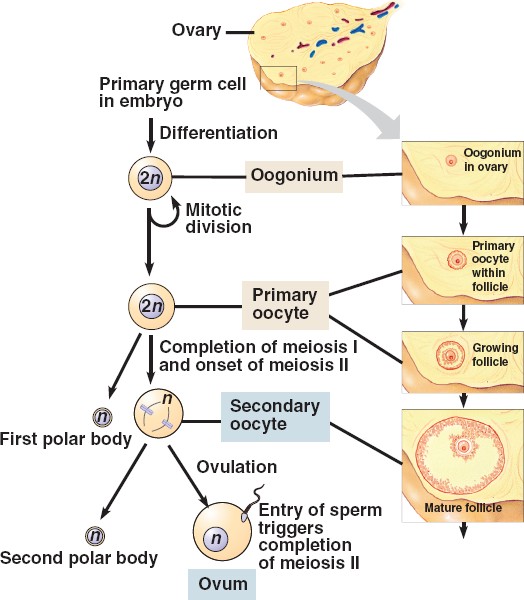
 Oogenesis.
Oogenesis.
Germ cells in the ovary differentiate into stem cells called oogonia.
Oogonia divide by mitosis, and mature into primary oocytes, enclosed in follicles. At birth, a mammalian female contains about 2 million primary oocytes.
At puberty, periodic secretion of FSH triggers meiosis in a few primary oocytes, but only one continues to complete meiosis I, producing a polar body and a haploid secondary oocyte.
The mature follicle ruptures and releases the secondary oocyte from the ovary, leaving behind the corpus luteum; this is ovulation.
Meiosis II is not completed until fertilization by a sperm, producing a second polar body and the fertilized egg, zygote.